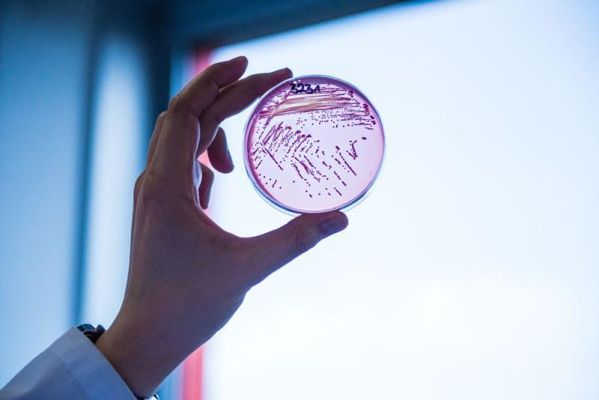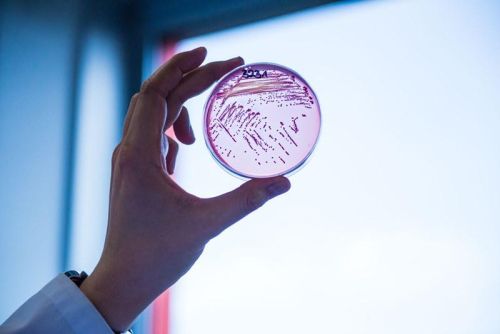---
Escherichia coli, or E. coli, is a member of a group of Gram-negative Enterobacteriaceae that predominantly reside in the human gut. Some strains can trigger infections when they access other regions of the body. In weakened patients in particular, they cause blood stream, wound and urinary tract infections. Their treatment is becoming increasingly challenging: in the fight against antibiotics E. coli bacteria and other Enterobacteriaceae have developed enzymes, so-called extended-spectrum beta-lactamases (ESBL), which render antibiotics ineffective. This mechanism of defence makes the bacterial pathogens multidrug-resistant and they are particularly dreaded in hospitals.
“We need to pay particular attention to a subset of multidrug-resistant E. coli bacteria which we have found in our current study,” explains Prof Trinad Chakraborty, Director of the Institute for Medical Microbiology at the JLU in Gießen and Coordinator at the DZIF partner site Gießen-Marburg-Langen. This subset is currently spreading globally and has now also been found in Germany.
Genome sequencing for monitoring antibiotic resistance
In the study, the scientists from Gießen investigated almost 1000 isolates of ESBL-producing bacteria from humans, animals, the environment and food. Their approach is in-line with the One Health approach which not only includes humans but also the respective environment in investigations. They specifically identified beta-lactamase genes and searched for a subset which had already increasing in other countries: a multidrug-resistant strain of E. coli, sequence type 131 (ST131). This strain is responsible for millions of infections worldwide, particularly for blood stream and bladder infections, and carries a relatively rare ESBL gene called blaCTX-M-27. The quest was successful: the researchers found E. coli ST131 CTX-M27 to be exclusively present in the human isolates and could confirm that its incidence had increased from 0 % in 2009 to 45 % in 2016.
“With this, this E. coli strain and its specific ESBL gene has become a competitor for an E. coli ST131 strain carrying a different ESBL gene, which has been the most prevalent in Germany up to now,” explains Dr Can Imirzalioglu, scientist at the Gießen University. More studies are required to investigate the causes and clinical implications of this shift. However, the results highlight the importance of modern methods such as genome sequencing for observing developments like this and for reacting rapidly in emergencies.
The project
This project was supported by the DZIF and the RESET Research Network which is dedicated to investigating antibiotic resistance in Enterobacteriaceae. Since 2013, scientists from the DZIF research field “Healthcare-associated and Antibiotic-resistant bacterial Infections” have been working together closely with the RESET Research Network in Gießen to collect multidrug-resistant infectious disease pathogens from animals and humans. Bacterial genomes from the isolates in this extensive collection were sequenced at the DZIF’s Bioinformatics Department and stored in a database. This genome database has repeatedly been used to successfully investigate the occurrence of resistance more closely.
Publication
Hiren Ghosh, Swapnil Doijad, Linda Falgenhauer, Moritz Fritzenwanker, Can Imirzalioglu, and Trinad Chakraborty: blaCTX-M-27–Encoding Escherichia coli Sequence Type 131 Lineage C1-M27 Clone in Clinical Isolates, Germany
Emerging Infectious Diseases Volume 23, Number 10—October 2017
https://wwwnc.cdc.gov/eid/article/23/10/17-0938_article
Contact
Prof Trinad Chakraborty
DZIF research field “Healthcare-associated and Antibiotic-resistant bacterial Infections”
Institute for Medical Microbiology
Justus Liebig University Gießen
T: +49 641 99 41251/81
E-mail:
Press Contact
Janna Schmidt and Karola Neubert
German Center for Infection Research
Press Office
T: +49 531 6181 1154/1170
E-mail:
Weitere Informationen:
- https://wwwnc.cdc.gov/eid/article/23/10/17-0938_article
Quelle: idw









